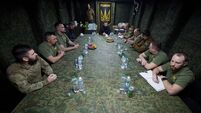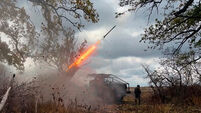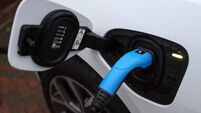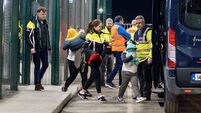Ukraine’s push for Nato membership is rooted in its European past — and its future

A law enforcement officer stands next to a gymnasium building destroyed as a result of hostilities in 2022 in the town of Izyum, Kharkiv region, on September 10, 2023, during the first anniversary of liberation of the small town in eastern Ukraine. Picture: Sergey Bobok/ AFP via Getty Images
















